Peter Drucker once said, “What gets measured gets improved.” Likewise, financial statements and reports are a clear measure of the position of your business, which is why having up-to-date, accurate records of your business is important. Not only do they provide you a microscopic view of your past and current financial health but also help you plan better for the future. If you are still stuck with the conventional method of creating financial statements, now is the time to rethink.
In this AI-driven world, manually creating your business’s financial statements is not the best way, especially if you are emphasising efficiency, and effectiveness and want to save on endless hours of manual labour. Today, creating accurate and insightful financial statements is more important than ever.
Whether you’re a solo entrepreneur, a Chief Financial Officer (CFO), startup-entrepreneur, investor, or a financial analyst, understanding the financial reporting process is essential for you to make informed decisions. Continue reading to get into the details of the creation of financial statements in 2025 and explore their importance, types and steps needed using advancements in AI software.
Table of Contents
5 Financial Statements Important for Your Business

1. Monthly P&L (Profit and Loss Statement)
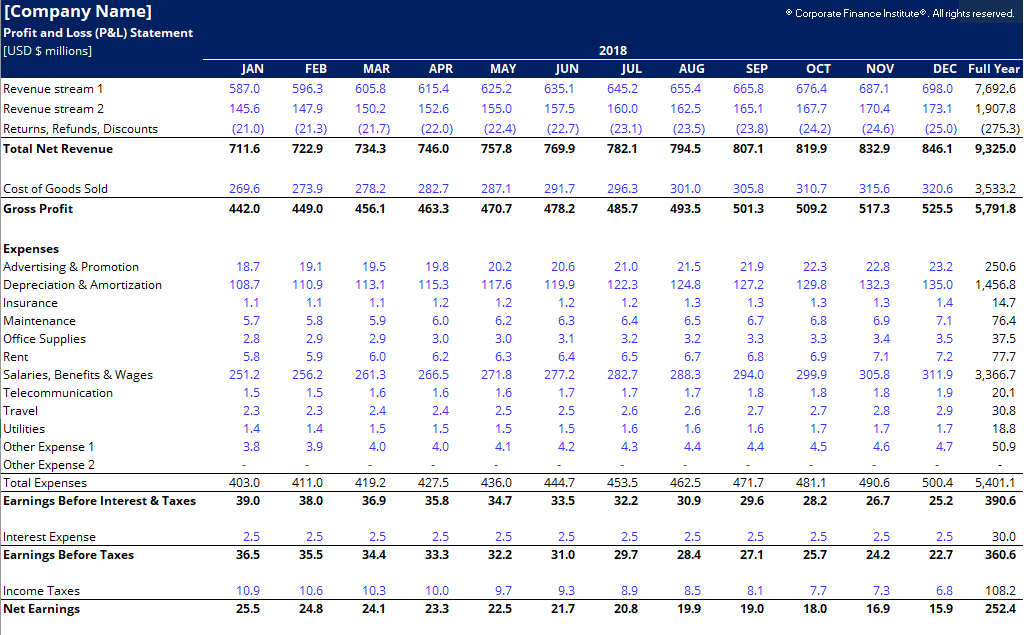
Image Source: CorporateFinanceInstitute
As clear from its name, the monthly Profit and Loss statement (P&L) is a financial report that summarises business’s revenues, costs, and expenses incurred over a month. It is important for businesses because it helps track monthly financial performance and trends, identify the top areas for reducing expenses and do better resource allocation, and, last but not least—identify the revenue streams that are most profitable.
Other than these, it indicates whether the business operates profitably and meets its financial obligations, and offers a clear financial summary for communicating with the company stakeholders such as investors, lenders, and management.
2. Schedule 3 – Balance sheet and Income Statement
Balance Sheet
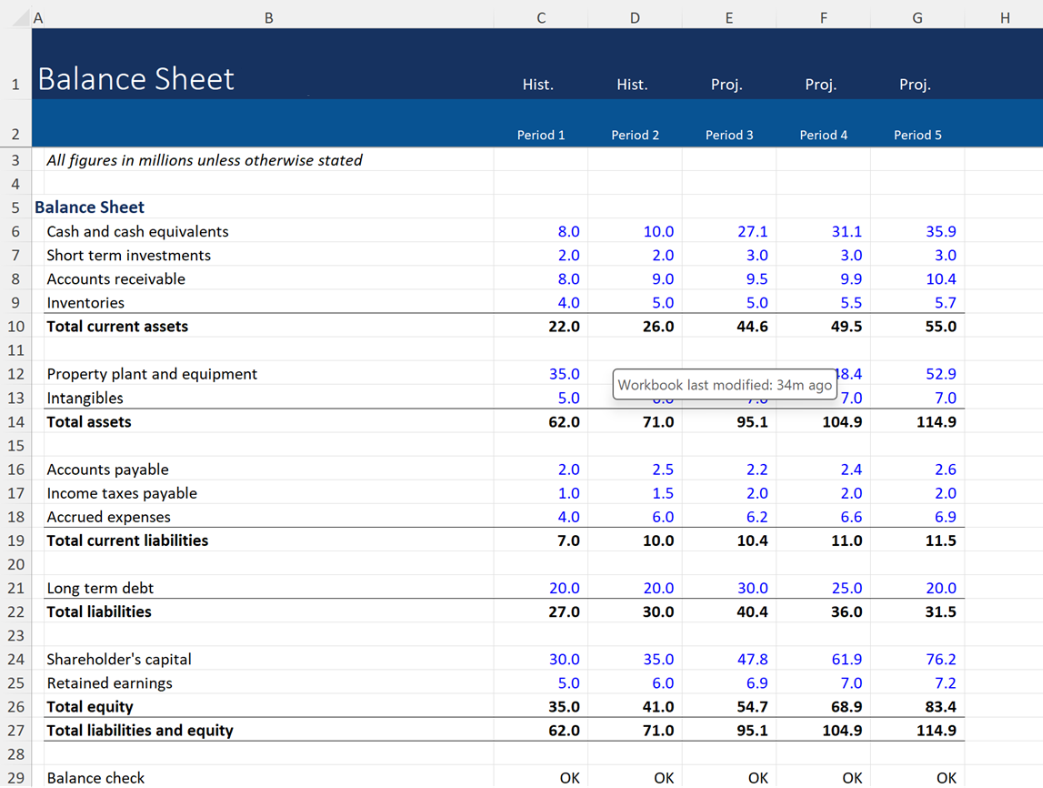
Image Source: Financial Edge
Think of the balance sheet as a financial photograph, capturing a moment to reveal what a company possesses and owes and the value of the owners’ stake at that precise instance.
Here are the components of a balance sheet:
- Assets: These are like the productive tools at the company’s disposal—cash, investments, properties, equipment, and inventory—that generate income.
- Liabilities: These are the financial commitments the company must settle in the near future—loans, bills, and other obligations. Any company wants to keep its business liabilities at minimum.
- Equity: This represents the residual interest or claim on assets after deducting liabilities. It’s like the shareholders’ share of the financial cut after all debts get settled.
Income Statement
Income statement is nothing but the financial performance report card of your company, detailing how much money was earned, spent, and what remained as profit during a specific period.
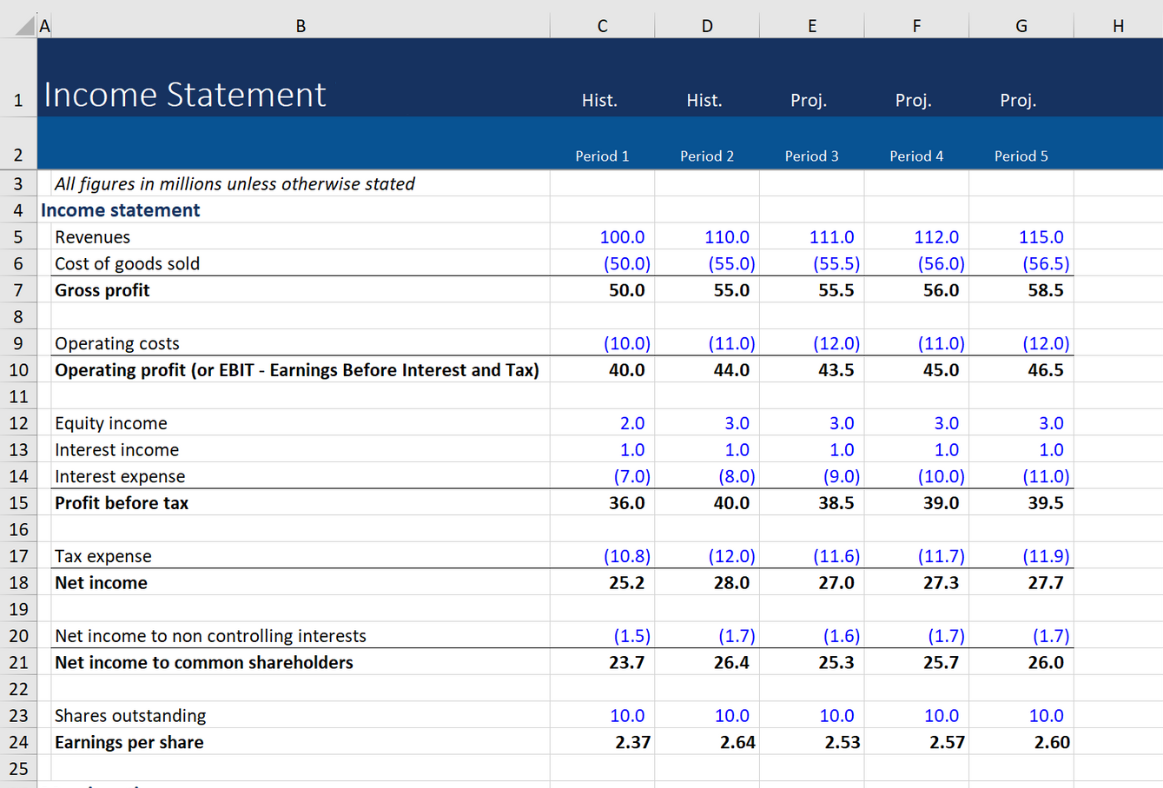
Its components are:
- Revenue: This is your company’s earnings scoreboard, showing the total cash generated from sales and other income sources. It’s just like the points scored in a game.
- Expenses: These are the operational costs incurred to keep the business running smoothly. They include everything from manufacturing expenses to rent payments and employee salaries. If you need more details into your business expenses, expense reporting is the answer.
- Net Income: Just like the final score in a game, net income is what remains after you subtract your expenses from the revenue. It indicates whether the company ended the period with a profit (positive net income) or a loss (negative net income). It’s essentially the bottom line of the company’s financial performance for that financial period.
3. Cash Flow Statement

Think of the cash flow statement as a financial GPS for a business, guiding it through the twists and turns of cash movements. Just like a GPS tracks your route and shows where you gain or lose time, the cash flow statement tracks how cash flows in and out of a company over a period.
- Cash Inflows (Revenues): This statement shows the cash brought into the company—from sales, investments, or loans. They keep the business moving forward.
- Cash Outflows (Expenses): It reflects the cash exits of the company—for expenses like wages, supplies, or investments in new equipment. They’re the costs of keeping the business on track.
- Net Cash Flow: Similar to your journey’s net result, net cash flow shows whether the company ended up with more cash (positive cash flow) or less (negative cash flow) after all the twists and turns. It’s the ultimate destination for financial health.
By following the cash flow statement like a GPS, businesses can move on its financial path, make adjustments to stay on course, and ensure they have enough fuel (cash) to reach their goals.
4. Accounts Receivable Ageing Report
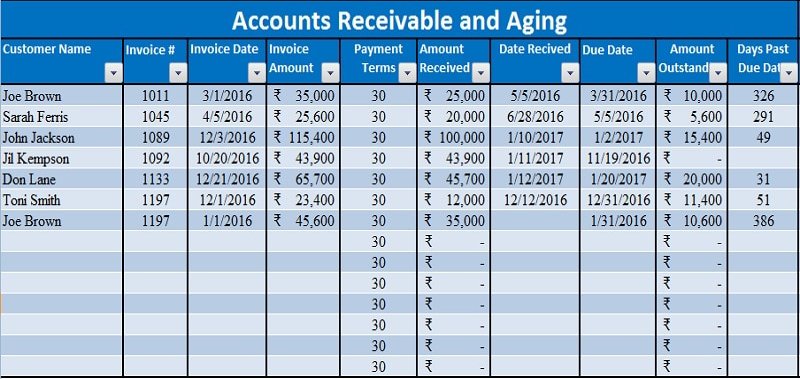
The accounts receivable ageing report is similar to a time-travelling map for a business, revealing the journey of unpaid invoices through different stages of ageing.
- Current Invoices: These are like invoices that just embarked on their journey—recent sales waiting to be paid. They represent the freshest transactions on the map.
- 30-Day Invoices: These invoices have been on the road for about a month. They’re starting to show their age but are still within a reasonable payment timeframe.
- 60-Day Invoices: Now, these invoices have been travelling for two months. If the invoice is 60-days ageing, it means it’s more noticeable, indicating delayed payments that need attention.
- 90-Day Invoices and Beyond: These are like invoices that have been on a long expedition, ideally, three months or longer. They represent the most aged invoices, signalling potential issues with collections or overdue payments.
The aged accounts receivable report helps businesses see where their invoices stand in terms of payment timelines.
5. Budget and Forecast Reports
- Budget Report: It outlines the expected income and expenses based on past data and future projections. Just as you plan your stops and expenses in advance for a trip, the budget sets financial goals and allocates resources to achieve them.
- Forecast Report: This report lets you adjust the initial plan based on current conditions and unexpected events. Similarly, the forecast report uses up-to-date information to predict future financial outcomes, adjusting strategies to stay on course despite changing economic or market conditions.
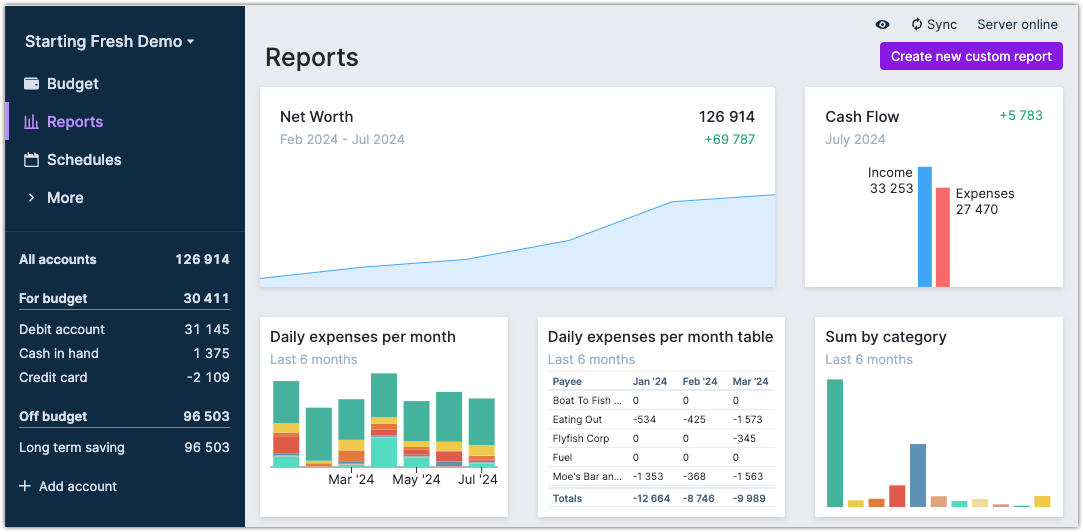
Why is Financial Reporting Needed in a Business
Financial statements serve many essential roles at startups and businesses:
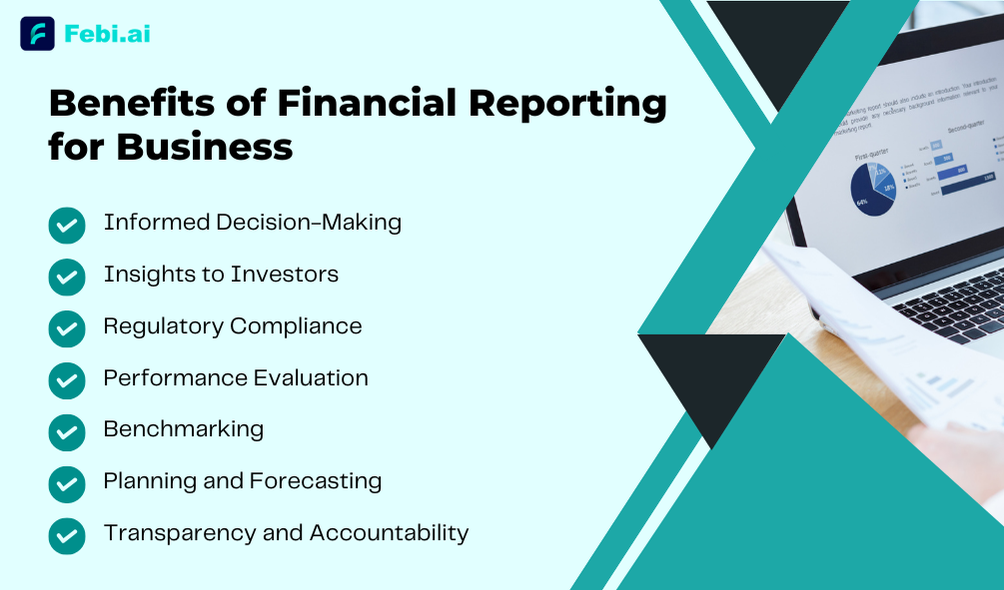
- Informed Decision-Making: They assist management in making strategic decisions by providing insights into profitability, liquidity and financial stability.
- Insights to Investors: Prior to making an investment, investors evaluate a company’s development potential and financial stability using these statements.
- Regulatory Compliance: They ensure adherence to accounting standards and regulatory requirements, providing transparency to stakeholders.
- Performance Evaluation: Businesses use these statements to compare their financial performance to competitors’ and industry norms.
- Benchmarking: Businesses use financial statements to assess how they are doing in relation to industry norms and competitors.
- Planning and Forecasting: Financial statements provide the historical data required for planning future activities and forecasting future trends.
- Transparency and Accountability: Financial statements ensure transparency and hold the company’s management accountable to shareholders and other stakeholders by showing how resources are being used.
Steps to Create Financial Statements in 2025 using AI software
Artificial intelligence is transforming how we work—saving time, boosting efficiency and improving accuracy. From bookkeeping to invoicing, payments, and financial statements, AI has proved itself as a trusted tool for financial reporting of businesses.
In fact, a recent report shows that over 90% of professionals are already using or plan to use AI in the next year. For creating financial statements, AI makes the process faster, easier, and more reliable, giving businesses the clarity they need to make smarter decisions. Here is how AI-driven accounting and financial reporting softwares can be used to create financial statements in 2025 and ahead.
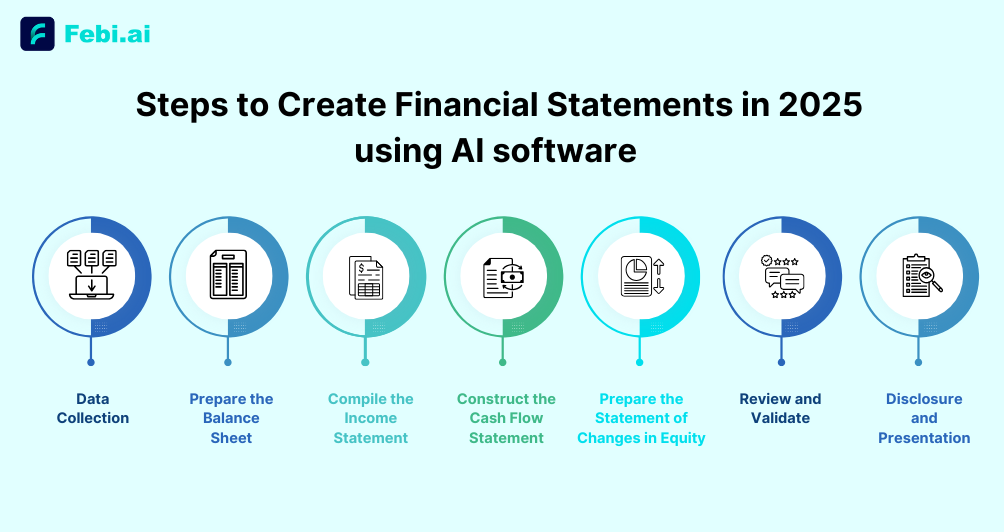
- Data Collection:
- Prepare the Balance Sheet:
- Streamline the categorization and valuation of assets, liabilities, and equity components with AI algorithms
- Advanced AI software such as Febi.ai automate the reconciliation of balances and ensure accuracy in financial reporting.
- Compile the Income Statement:
- Construct the Cash Flow Statement:
- Prepare the Statement of Changes in Equity:
AI tools assist in tracking changes in equity, including adjustments from transactions like stock issuances or buybacks. - Review and Validate:
- Disclosure and Presentation:
Utilise AI tools to gather and organise financial data from various sources, including transactions, invoices and payroll records. When using Febi, all you need to do is click a picture of your transaction using the phone, Whatsapp, email or directly upload to the dashboard, and that’s all. Transaction recording under the appropriate heads is taken care of by the tool.
AI-driven analytics can analyse revenue streams and categorise expenses, facilitating the calculation of net income.
View the breakdown of your cash flows into operating, investing, and financing activities, ensuring comprehensive tracking and reporting.
Artificial intelligence-powered solutions bring auto-validation capabilities, which means you or your accountant no longer need to spend endless hours and efforts, manually looking for issues at times when the books don’t balance or match. These tools automatically validate data and identify errors, streamlining the process of ensuring accuracy and compliance with the latest accounting regulations and principles.
Use AI-generated templates and reporting tools to present financial statements in a clear and standardised format, meeting regulatory requirements.
Febi.ai: One-Click Access to all Financial Statements and Reports
Creating and managing financial statements can be complex and time-consuming, but Febi.ai simplifies this process effortlessly. As India’s first AI-powered platform, Febi allows you to generate essential financial statements and over 20 detailed reports with just one click, all in a few seconds. The SaaS platform transforms financial management by streamlining both the creation and financial statements analysis of these documents.
Its AI-driven insights offer intuitive and dynamic charts and graphs, making your financial position clear even if you’re not an industry expert. By providing a clear view of current performance and predicting future trends, Febi empowers you to make informed, strategic decisions. Explore Febi.ai to simplify your financial processes and drive sustainable growth.










